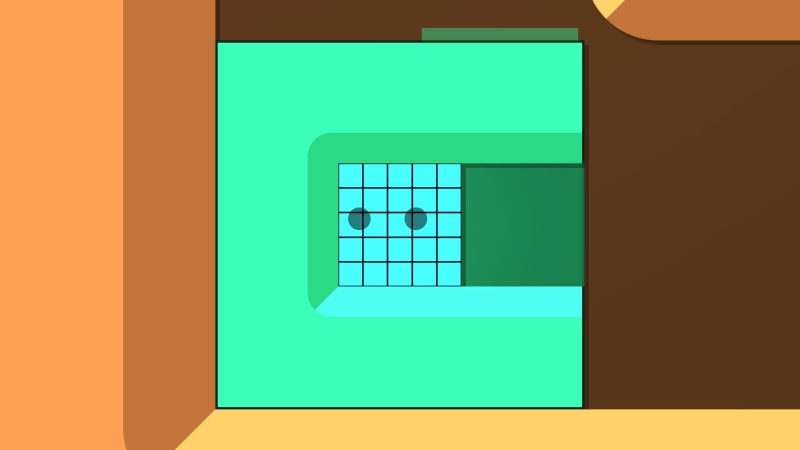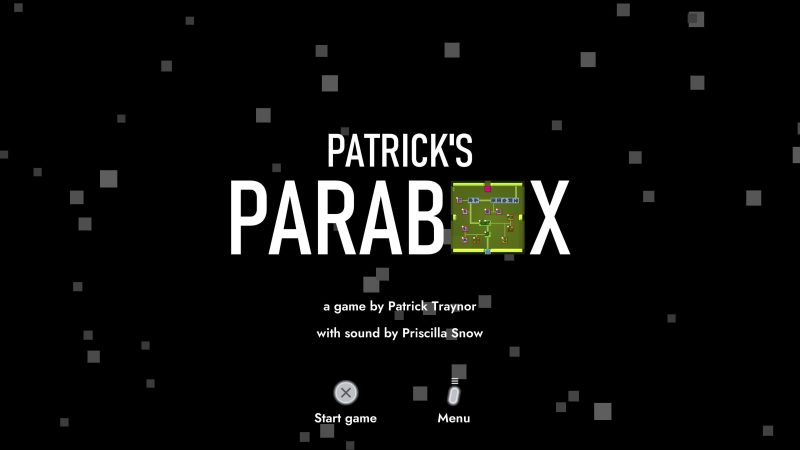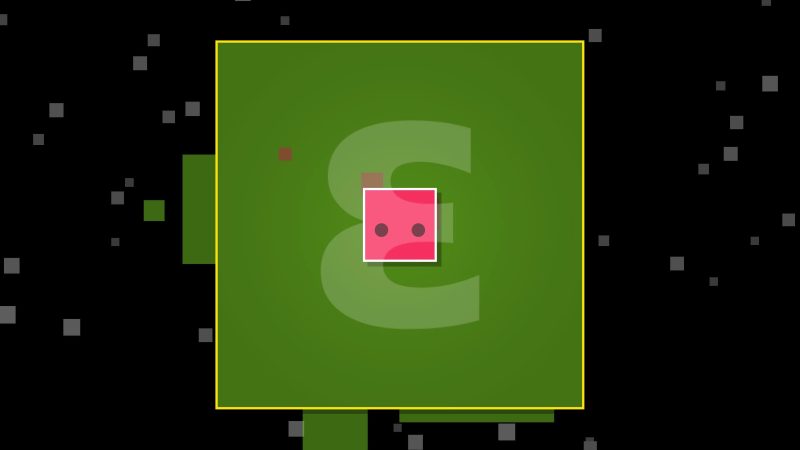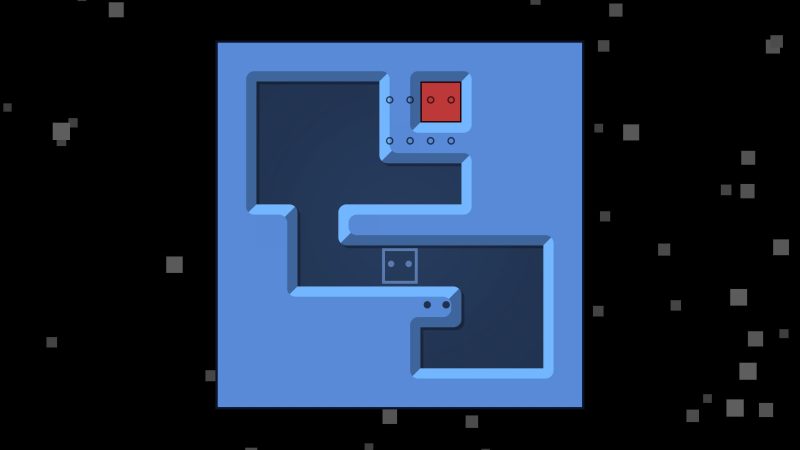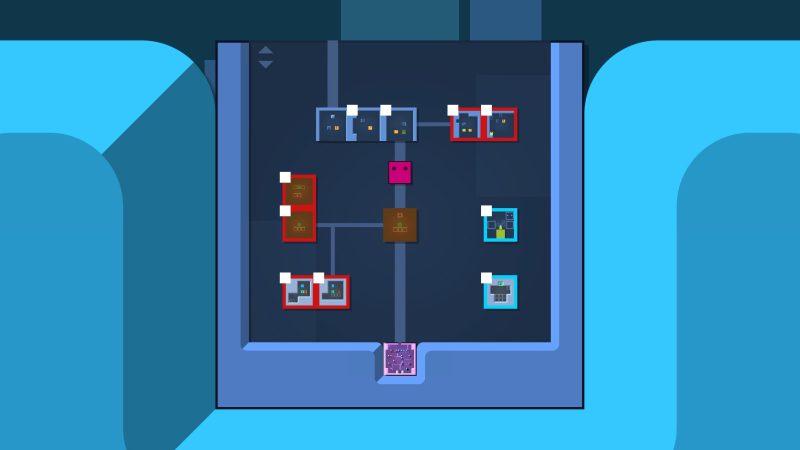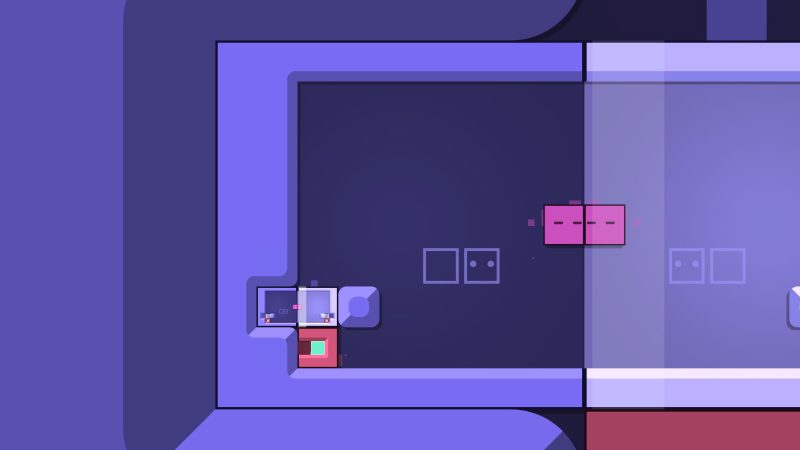Interview with Patrick’s Parabox Developer Patrick Traynor On Thinking Outside And Inside The Box – When I first loaded up Patrick’s Parabox, I was almost instantly charmed by how inviting it felt, and how unassuming it seemed.
That all came just from the menu and its initial levels, though as I dug deeper I found a beast of a puzzle game disguised as a cozy game that could lull you into a state of intense thinking and puzzle solving.
It seemed to effortlessly walk the line between being too intense and difficult that you were quickly frustrated, while always feeling fun and making you believe you’re some incredible puzzle-mind as you move through the ever more paradoxical box-based challenges.
I give Patrick’s Parabox plenty of more praise in my full review, with my excitement around the game only elevating when I got to ask the game’s developer Patrick Traynor a few questions about it.
Traynor’s first commercial project, Patrick’s Parabox comes out of a love for puzzle games, particularly Sokoban, and even found its core boxes-within-boxes mechanic from a different Sokoban-inspired project.
We get into the initial inspirations for Patrick’s Parabox, Traynor’s process for creating levels, and more.
Interview With Patrick’s Parabox Developer Patrick Traynor On Thinking Outside And Inside The Box
PSU: Right as I started playing Patrick’s Parabox, I could feel there was something special about it. What was the first level you designed, and do you remember the first time you felt like you knew this would be your first commercial title?
I made lots of test levels to experiment with the mechanics and to discover interesting interactions and layouts. I then made puzzles featuring each of these interactions. So, it’s hard to remember exactly which level came first!
As I continued, there ended up being a large number of mechanics and puzzles, larger than I anticipated. And I received very positive feedback from my game development peers about the game. So, eventually I decided to make it my first commercial game.
PSU: Was it always the plan to get “paraboxical” with the puzzles? When did you know a new rule to how the puzzles worked was final?
The mechanic of a box containing itself was actually not present from the start – it’s adapted from a game called Sokosoko by juner. Before that, there were only boxes that contained other boxes.
When adding new rules or mechanics to the game, I had these requirements: Mechanics have to feel natural, be intuitive to reason about, enable creating lots of new puzzles (not just a few), and not feel restrictive to the player. Though I still had to experiment with the rules and iterate on them over time.
PSU: Patrick’s Parabox does an excellent job of teaching by doing. Was there ever a version where you had a more in-depth tutorial, beyond just the basic controls? What do you think is earned by letting the player figure each new mechanic and rule out themselves?
I didn’t experiment with more detailed explanations. How I look at it is: As the developer of the game, I’ve discovered lots of interactions within the game’s recursive box ruleset, and then I present these to the player as puzzles so that they can make the same joyful discoveries that I did during development. I think this kind of wordless discovery works well in games like this one.
PSU: How did the collaboration with Priscilla Snow come about? What was the process like working with them?
Alan Hazelden, a very experienced puzzle game developer, recommended that I reach out to Priscilla Snow, whom he had worked with on a previous project, A Good Snowman Is Hard To Build. I think Priscilla’s particular electronic music style fits Patrick’s Parabox very well, as does their sound design.
It was nice working with them, we did a fair amount of iteration on the sounds and music, and I’m happy with how it ended up!
PSU: When did you have the visual style finalized? What was it that made you want to keep it simple?
The visuals, though minimalist, did go through a lot of iteration – colors, line widths, outlines, squishing animations, particles, and more. I kept tweaking them throughout most of development.
I did experiment with more detailed visuals, but my attempts were a bit too visually distracting, and I’m not the best at graphic design. I also like how the abstract nature of the visuals reflects the abstract nature of the mechanics.
PSU: How did you know when a level was done? Was it tough to balance their difficulty?
I did a lot of playtesting of the game! Many puzzles went through many iterations – simplifying them, making them clearer, fixing exploits, etc. I also often added new puzzles to help reinforce a concept that a playtester was struggling with.
Managing the progression of 364 puzzles was a big challenge. I iterated on the puzzle order many times with many playtesters!
PSU: What is it that you think makes Sokoban special and what about it helped inspired Patrick’s Parabox?
I really enjoy Sokoban-like games where you push objects around on a grid, such as Stephen’s Sausage Roll, A Monster’s Expedition, Baba Is You, and many others. This is a good question. I think there’s something about the grid-based movement, and the physicality of walls and pushable objects, that makes these games very compelling to reason about and experiment in.
It’s physically relatable to push a box around, so it feels magical to be able to shrink down and enter inside it. As well as box-pushing being a fertile ground for making lots of puzzles, even in the original Sokoban game with no added mechanics.
PSU: Do you have any other puzzles or puzzle mechanics that were left on the cutting room floor? Is there a possibility we’ll ever see those in later, DLC releases?
No DLC is planned for the game. There are a lot of puzzles left on the cutting room floor – but they’re left there for a reason! Making lots and lots of drafts and choosing only the best ones for the game significantly helped its quality.
As for mechanics, there’s always potential to add more, but I chose to stick with only the most natural ones, and that ended up being quite a big game already!
PSU: What is it about a puzzle game that makes it able to endure for years, and do you think Patrick’s Parabox has that potential?
I’m not quite sure. Personally, a lot of my favorite puzzle games explore novel systems that don’t feel like they’ve been explored in other games.
I enjoy being surprised by interactions and discovering depth in these systems. (Of course, there are other types of puzzle games too!) I do hope that Patrick’s Parabox continues to be enjoyed by people for a while to come.
PSU: What’s next for you?
I’m continuing working on puzzle games! I’m not sure exactly which projects of mine will come to fruition first, or when. But I’m thrilled at the success of Patrick’s Parabox and I’m excited to continue along this puzzle path!
Thank you to Patrick Traynor for his time and his generous responses, and to Dana Trebella for their work in making this interview possible.
Patrick’s Parabox is now available on PS5 and PS4.
